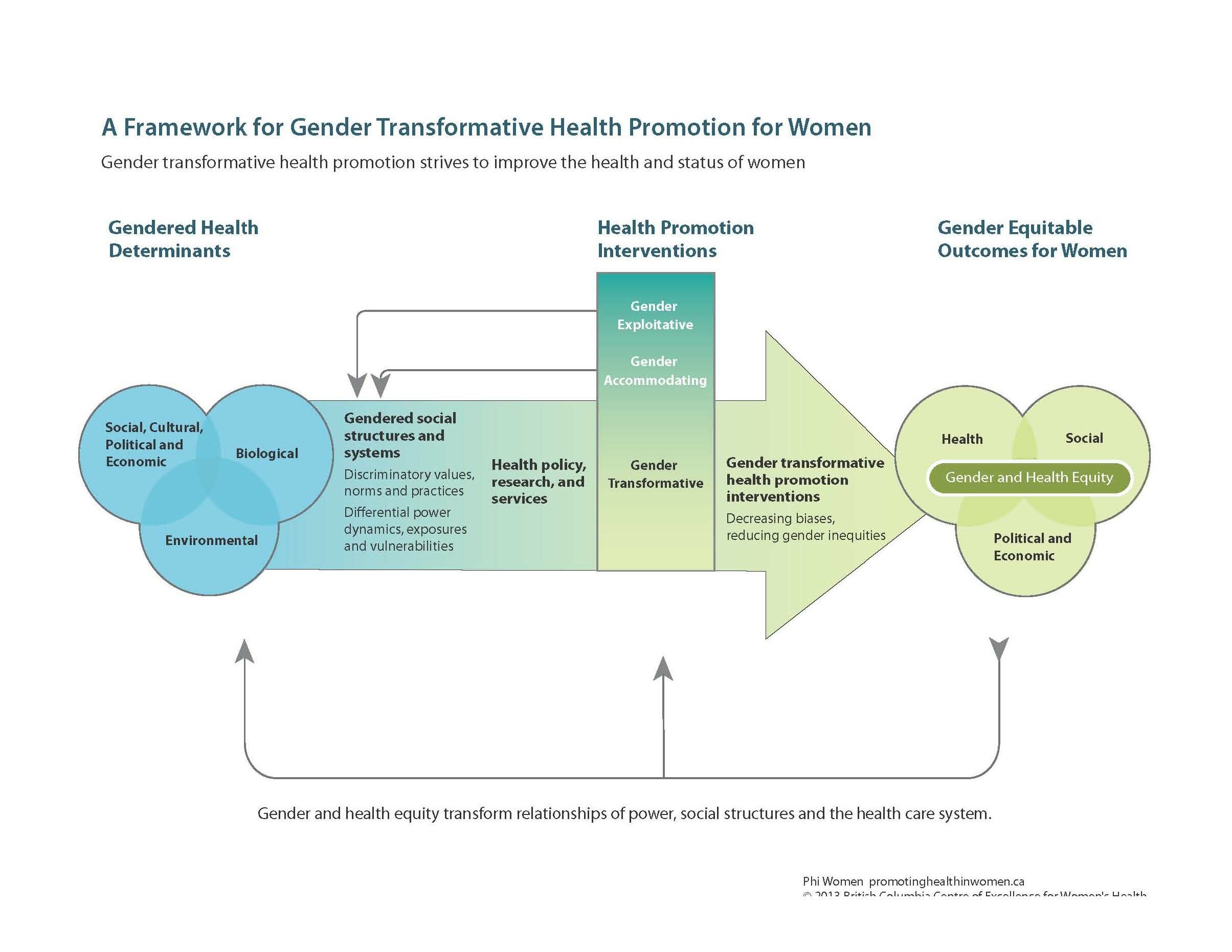Framework for Gender Transformative Health Promotion
The Framework for Gender Transformative Health Promotion below was developed by over 150 health promotion researchers, practitioners and policy makers through a multi-year stakeholder consultation process that included an iterative process of literature reviews, case studies and dialogue (7).
The Framework is a conceptual tool designed to illustrate how health promotion can contribute to gender transformation to enhance both health and gender equity.
It shows how health promotion interacts with multiple factors to either improve health and social outcomes for women or, through a feedback loop, maintain health systems and social structures that are based on and foster biased and discriminatory norms and practices.
This framework suggests that gender transformation should be an explicit aim of health promotion practice, policy-making, and research. If sex and gender are not recognized, then health promotion can only contribute to minor changes in health and social outcomes or may even exacerbate health inequities (2, 8).
Each section is understood to affect the one(s) to its right.
- Gendered health determinants are created through the interactions of numerous gendered facets of social, cultural, political and economic context and environmental and biological conditions (which include important sex-based influences).
- Gendered social structures and systems are clearly reflected in discriminatory values, norms and practices that advantage some and disadvantage others. These are intimately connected to differential power dynamics and influence how women and men, girls and boys experience different vulnerabilities and exposures to health-enhancing or health-diminishing environments, conditions and actions.
- This complex set of gendered social structures and systems include the “health” system, that is, the infrastructure of health policy, research and services, as well as reflecting individual social and biological determinants.
- All these determinants contribute to gender and health equity, including direct health outcomes for women (e.g., life expectancy, health status, mental health) as well as socio-political-economic outcomes (e.g., level of education and income; relationship status; place of residence; membership in valued social networks)

